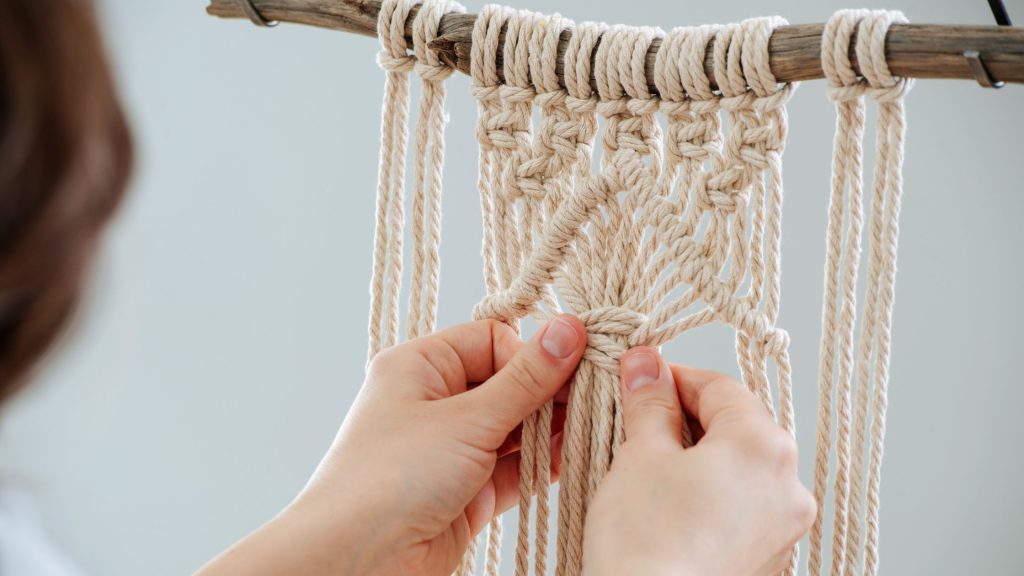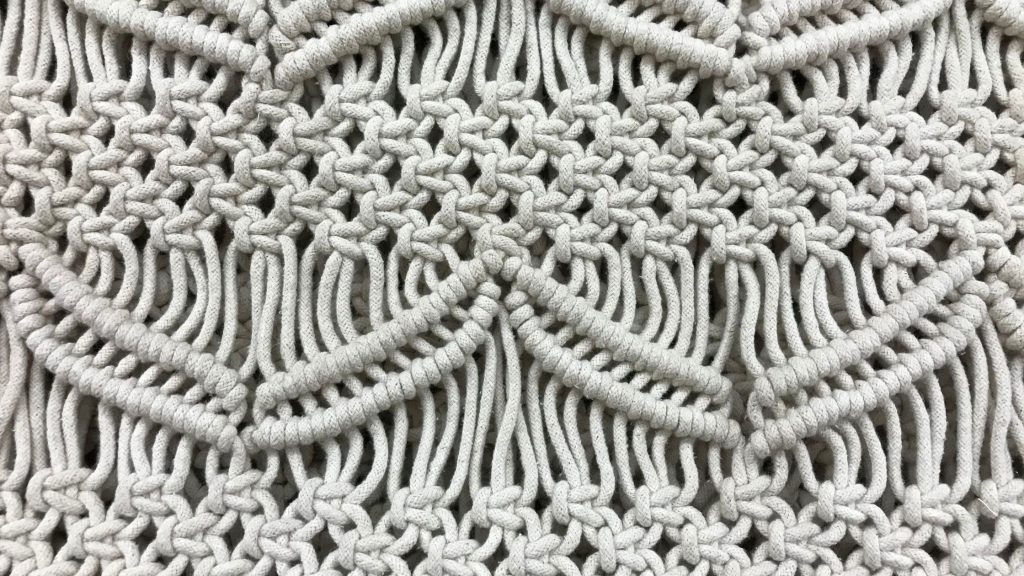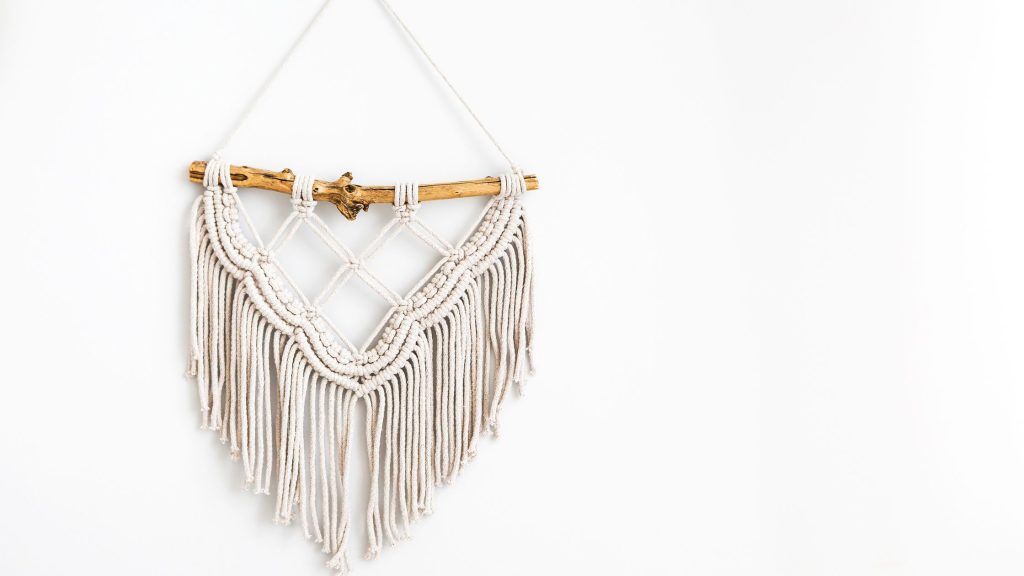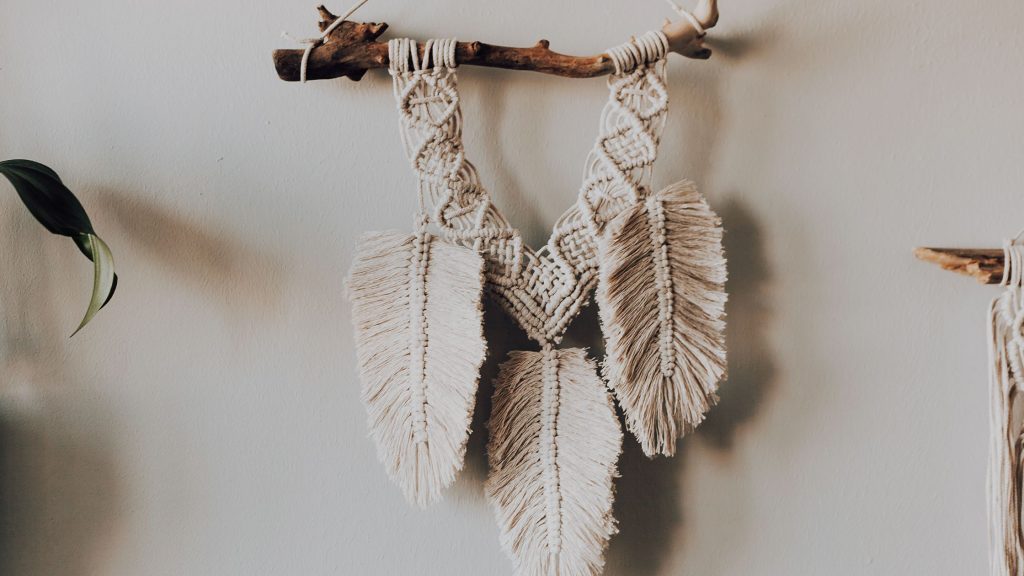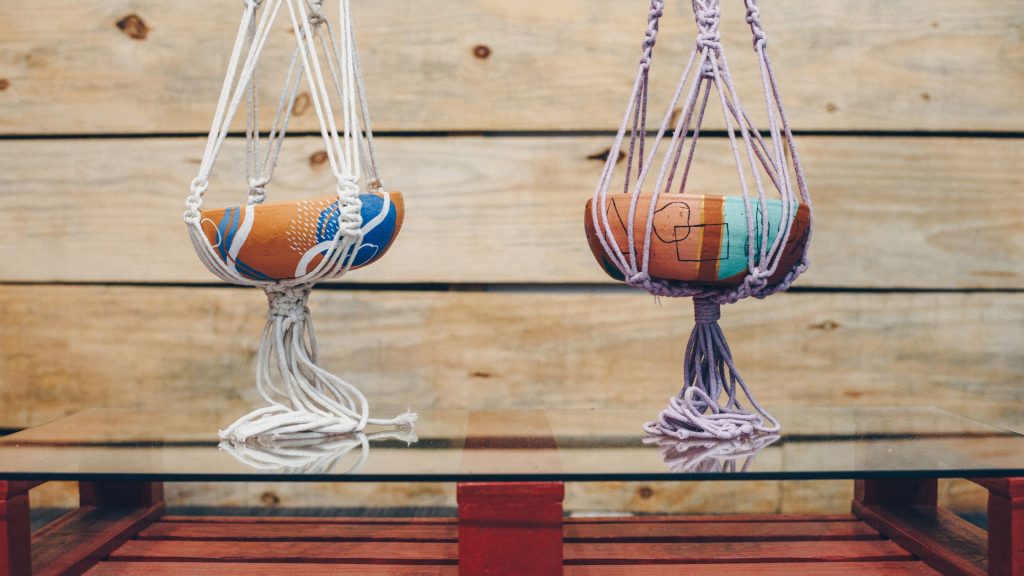Did you know that macrame, the art of knotting cords to create intricate patterns, has a rich history that extends beyond the realm of home decor? This article explores the fascinating world of macrame exhibitions throughout history. Delve into the past as we uncover the notable exhibitions that showcased the versatility and beauty of this age-old craft. From elaborate wall hangings to delicate jewelry pieces, these exhibitions were a testament to the creativity and skill of macrame artisans throughout the years. Join us on this journey as we weave together the threads of history and discover the untold stories behind the captivating world of macrame exhibitions.
Macrame Exhibition in Paris (1867)
Introduction to the Exhibition
In 1867, Paris hosted a remarkable Macrame Exhibition that showcased the artistry and craftsmanship of macrame artists from around the world. The exhibition aimed to highlight the intricate knotting techniques and delicate designs that were integral to the art form. This event not only provided a platform for macrame artists to exhibit their work but also introduced this unique craft to a wider audience.
Notable Artists and Works
The Macrame Exhibition in Paris (1867) featured the works of several notable artists who pushed the boundaries of the craft and created awe-inspiring pieces. One standout artist was Marie-Anne Gérard, whose macrame lace curtains adorned the entrance of the exhibition hall. Gérard’s intricate designs and meticulous attention to detail captivated visitors and solidified her reputation as a pioneer in the macrame world.
Another notable artist at the exhibition was Pierre Lefranc, whose large-scale macrame tapestries were a marvel to behold. Lefranc’s tapestries featured intricate patterns and textures, showcasing the versatility of macrame as an art form. These exquisite works of art displayed the innovation and creativity of macrame artists during this period.
Impact and Reception
The Macrame Exhibition in Paris had a significant impact on the perception and recognition of macrame as a legitimate art form. Before this exhibition, macrame was often seen as a craft primarily used for utilitarian purposes, such as making lace or household items. However, the exhibition elevated macrame to the realm of fine art, attracting the attention of artists and art enthusiasts alike.
The reception of the exhibition was overwhelmingly positive, with visitors praising the skill and artistry displayed in the macrame works. Critics lauded the exhibition as a groundbreaking event that showcased the true potential of macrame as a medium for artistic expression. The success of the exhibition paved the way for future macrame exhibitions and solidified its place in the art world.
Macrame Exhibitions in the Arts and Crafts Movement
Origins of the Arts and Crafts Movement
The Arts and Crafts Movement, which originated in the late 19th century, sought to revive traditional crafts and promote the importance of handmade goods in the face of industrialization. The movement emphasized the value of craftsmanship and the beauty of handmade objects, which resonated with macrame artists who embraced the intricate and labor-intensive nature of their craft.
Macrame’s Inclusion in the Movement
Macrame found a natural home within the Arts and Crafts Movement due to its emphasis on handmade craftsmanship. The movement’s leaders, such as William Morris and John Ruskin, recognized macrame as a fine art and sought to incorporate it into their vision of a holistic approach to design and artistic creation.
Several macrame artists began to actively participate in the Arts and Crafts Movement, exhibiting their works alongside other craftsmen in major exhibitions. Macrame pieces, including curtains, wall hangings, and ornamental fringes, were showcased in these exhibitions, elevating the status of macrame as a reputable art form within the broader context of the movement.
Notable Works and Exhibitions
One notable macrame exhibition during the Arts and Crafts Movement was held in London in 1890. Organized by the influential Arts and Crafts Society, this exhibition featured an array of macrame pieces that garnered significant praise and recognition from both artists and the general public. The exhibition served as a testament to the growing popularity and artistic merit of macrame during this period.
Among the notable works showcased in the exhibition was a large macrame wall hanging by Emily Paget, renowned for her innovative techniques and intricate designs. Paget’s masterpiece featured a combination of knotting styles and unique patterns, creating a breathtaking piece that captivated visitors and exemplified the skill of macrame artists within the Arts and Crafts Movement.
Macrame at the Panama-Pacific International Exposition (1915)
Overview of the Exposition
The Panama-Pacific International Exposition, held in San Francisco in 1915, was a world’s fair that aimed to celebrate the completion of the Panama Canal and showcase the achievements of the United States in the fields of industry, technology, and the arts. The exposition attracted millions of visitors from around the world and provided a platform for various art forms, including macrame, to be exhibited.
Macrame Pavilion and Artists
The Macrame Pavilion at the Panama-Pacific International Exposition showcased the diversity and creativity of macrame artists from different countries. Artists from Europe, Asia, and the Americas came together to exhibit their works and exchange ideas, creating a rich and immersive experience for the visitors.
One of the standout artists at the Macrame Pavilion was Yamamoto Hirojiro from Japan. Hirojiro’s intricate macrame sculptures, inspired by nature and traditional Japanese motifs, astounded visitors with their delicate beauty. His works demonstrated the fusion of traditional macrame techniques with Japanese aesthetics, showcasing the global reach and adaptability of the craft.
Recognition and Legacy
The inclusion of macrame in the Panama-Pacific International Exposition helped solidify its position as a respected art form on an international stage. The recognition and appreciation for macrame’s artistic value grew significantly during this time, as visitors marveled at the intricate works and unique designs.
The legacy of macrame at the Panama-Pacific International Exposition extended beyond the event itself. The exposure and acclaim received by macrame artists at the exposition opened doors for further opportunities and recognition in the art world. Macrame’s presence at this prestigious event helped establish it as a significant form of artistic expression and laid the groundwork for future macrame exhibitions.
Macrame Exhibitions in the 20th Century
Modernist Influence on Macrame
In the early 20th century, the rise of modernism in art and design had a significant impact on macrame. Modernist artists and designers sought to break free from traditional artistic conventions and explore new forms of expression. Macrame, with its focus on texture and three-dimensional forms, was embraced by many modernist artists as a medium that aligned with their artistic goals.
Modernist macrame pieces often featured bold geometric patterns and a reduction of ornamentation. Artists like Anni Albers and Gunta Stölzl infused macrame with their avant-garde sensibilities, creating abstract and experimental works that challenged the boundaries of the craft. The modernist movement propelled macrame into new realms of artistic exploration and innovation.
Macrame at the Museum of Modern Art (MoMA)
The Museum of Modern Art (MoMA) played a pivotal role in elevating macrame’s status as a modern art form. In the mid-20th century, MoMA curated several exhibitions that featured macrame alongside other forms of modern and contemporary art. These exhibitions allowed macrame to be seen in the context of fine art, highlighting its artistic merit and pushing the boundaries of its creative possibilities.
Macrame artists such as Shiota Chiharu and Ruth Asawa gained recognition through their inclusion in MoMA exhibitions. Chiharu’s large-scale installations transformed entire gallery spaces, utilizing macrame to explore themes of memory and identity. Asawa’s intricate wire macrame sculptures captured the attention of audiences, blurring the lines between craft and fine art.
Macrame’s Popularity and Exhibitions
Throughout the 20th century, macrame experienced waves of popularity that were reflected in numerous exhibitions dedicated solely to the craft. The vibrant colors, intricate patterns, and tactile nature of macrame captured the imagination of artists and the public alike.
During this time, macrame exhibitions were held in major art centers such as New York, Paris, and London. These exhibitions showcased the works of both established and emerging macrame artists, giving them a platform to connect with a broader audience. The diverse range of styles and techniques on display demonstrated the versatility of macrame as an art form and fueled its continued popularity.
Revival of Macrame in the 1960s and 1970s
Macrame’s Resurgence in Popular Culture
The 1960s and 1970s witnessed a resurgence of interest in macrame, fueled by the cultural shifts and countercultural movements of the time. Macrame’s association with the bohemian lifestyle and the DIY ethos of the era made it a popular craft among hippies and the general public alike. Its accessible nature and the ability to create unique, handmade items played a significant role in its resurgence.
Macrame plant hangers, wall hangings, and jewelry became ubiquitous during this period, appearing in homes, boutiques, and even music festivals. The popularity of macrame spread through magazines, books, and workshops, making it a widely embraced craft. Macrame became not only an artistic expression but also a symbol of individuality and self-expression.
Notable Exhibitions and Artists of the Era
The 1960s and 1970s saw the emergence of several notable macrame artists who showcased their works in various exhibitions. One influential artist was Robert Woods, whose large-scale macrame installations adorned public spaces and gallery walls. Woods’ innovative approach to macrame pushed the boundaries of the craft, incorporating unconventional materials and techniques.
Exhibitions during this era often featured macrame alongside other forms of fiber art and craft, highlighting the interdisciplinary nature of contemporary textile practices. These exhibitions provided a platform for macrame artists to showcase their works and connect with a broader community, further fueling the popularity of macrame in the 1960s and 1970s.
Macrame’s Influence on Fashion and Interior Design
The resurgence of macrame in the 1960s and 1970s extended beyond the world of art and craft, influencing fashion and interior design. Macrame garments, accessories, and home decor became fashionable choices, reflecting the bohemian aesthetic of the era.
Macrame plant hangers, curtains, and wall hangings adorned homes, bringing a touch of handmade warmth and texture to interior spaces. Fashion designers, such as Yves Saint Laurent and Missoni, incorporated macrame into their collections, elevating its status as a fashionable choice. Macrame’s versatility and adaptability made it a favored medium among designers seeking unique and eye-catching pieces.
Macrame Exhibitions in Contemporary Times
International Macrame Exhibitions
In contemporary times, macrame exhibitions continue to be held around the world, celebrating the diversity and evolution of the craft. These exhibitions bring together macrame artists from different cultures and backgrounds, offering a platform for artistic exchange and exploration.
International macrame exhibitions often feature a wide range of styles and techniques, from traditional to contemporary. They showcase the versatility of macrame as artists experiment with new materials, scales, and applications. These exhibitions provide an opportunity for macrame artists to gain recognition and connect with a global community of fiber artists, ensuring the craft’s continued growth and innovation.
Macrame in Art Galleries and Museums
Art galleries and museums have increasingly recognized the artistic value of macrame and have started incorporating it into their exhibitions. Curators and collectors are showcasing contemporary macrame works alongside other forms of fine art, positioning it as a significant artistic medium.
Several renowned art institutions, such as the Victoria and Albert Museum in London and the Museum of Arts and Design in New York, have dedicated gallery spaces to feature macrame exhibitions. These exhibitions not only highlight the skill and creativity of macrame artists but also bridge the gap between craft and fine art, challenging traditional notions of artistic value.
Exploring Macrame in Non-Traditional Spaces
Macrame exhibitions have expanded beyond the confines of traditional gallery spaces, seeking to engage audiences in unexpected and unconventional ways. Artists and curators are increasingly exploring alternative venues and interactive installations, offering a fresh perspective on macrame’s possibilities.
Pop-up exhibitions in parks, public squares, or even street corners allow macrame to interact with the urban environment and a wider audience. Interactive installations encourage viewers to touch and even participate in the macrame artworks, fostering a more immersive and engaging experience. These non-traditional exhibitions bring macrame to unexpected places, breaking down barriers and making art more accessible to all.
Macrame at International Craft Fairs
Macrame’s Presence in Craft Fairs
Craft fairs have long been a platform for artists and artisans to showcase their handmade creations, including macrame. These events draw enthusiasts and collectors who appreciate the skill and artistry that goes into macrame works.
Macrame’s presence in craft fairs allows artists to interact directly with visitors, sharing their techniques, inspirations, and stories. It provides an opportunity for artists to receive immediate feedback, connect with fellow crafters, and learn from each other. Craft fairs play a vital role in building a supportive community for macrame artists and fostering the exchange of ideas and techniques.
Notable Macrame Exhibitions and Artists
Craft fairs around the world have featured notable macrame exhibitions and artists, contributing to the recognition and growth of the craft. The Renegade Craft Fair, held in several cities worldwide, has been a particularly renowned venue for showcasing macrame and other contemporary craft forms.
Artists like Sally England and Emily Katz gained prominence through their participation in craft fairs. England’s macrame wall hangings and Katz’s macrame workshops at various fairs have inspired countless individuals to explore macrame, fostering its continued growth and popularity as a craft.
Evolving Trends in Macrame Exhibition
Macrame exhibitions at craft fairs are not limited to traditional techniques and aesthetics. As the craft evolves, artists are experimenting with new materials, scales, and conceptual ideas, challenging established notions of what macrame can be.
Evolving trends in macrame exhibitions include incorporating elements of mixed media, integrating technology into the artworks, and exploring conceptual themes. These innovative approaches expand the boundaries of macrame and contribute to its ongoing relevance in contemporary art and craft contexts.
Digital Macrame Exhibitions
Macrame’s Digital Presence
With the advent of digital platforms and the internet, macrame has found a new space for exhibition and engagement. Digital platforms offer artists the ability to showcase their works to a global audience, eliminating the constraints of physical location and expanding the reach of macrame as an art form.
The digital presence of macrame includes websites, social media platforms, and online marketplaces where artists can exhibit their works, connect with other artists and enthusiasts, and explore new opportunities. The online world has provided a fertile ground for the exchange and growth of macrame as a global craft.
Online Macrame Exhibitions and Platforms
Online macrame exhibitions have emerged as a way to curate and showcase macrame works in a digital format. These virtual exhibitions replicate the experience of visiting a physical gallery, allowing viewers to explore a collection of macrame artworks from the comfort of their own homes.
Online platforms dedicated to macrame, such as Macrame Masters and Macrame Archive, offer a space for artists to display their works and engage with a community of macrame enthusiasts. These platforms not only provide exposure for artists but also inspire and educate others interested in macrame, fostering a vibrant and supportive online community.
Virtual Reality and Interactive Macrame Exhibits
Emerging technologies, such as virtual reality (VR), are being utilized to create interactive macrame exhibits that provide an immersive experience for viewers. VR allows participants to explore macrame installations as if they were physically present in the exhibition space, offering a unique and engaging way to interact with the craft.
Interactive macrame exhibits in virtual reality enable viewers to manipulate and touch virtual macrame works, providing a multi-sensory experience. This technology expands the possibilities of macrame exhibition, creating new avenues for audience engagement, and pushing the boundaries of what is possible in the world of macrame.
Macrame’s Role in Community Exhibitions
Macrame in Community Art Exhibitions
Macrame has played a significant role in community art exhibitions, providing an opportunity for individuals of all backgrounds to express themselves creatively. Community art exhibitions often feature works created by residents, including both experienced artists and beginners exploring macrame for the first time.
These exhibitions serve as a celebration of individual creativity within a broader community context. Macrame works, ranging from small wall hangings to large-scale installations, become a focal point for community engagement and dialogue, fostering a sense of connection and shared experience.
Macrame Workshops and Demonstrations
Community art exhibitions often incorporate macrame workshops and demonstrations, allowing visitors to learn about the craft and try their hand at basic knotting techniques. These interactive sessions create a space for skill-sharing and encourage individuals to explore their creative potential.
Macrame workshops provide a supportive and inclusive environment where participants can connect with others who share an interest in the craft. These hands-on experiences foster a sense of empowerment, allowing individuals to create something with their own hands and gain a deeper appreciation for the artistry and skill involved in macrame.
Participatory Macrame Installations
In community art exhibitions, participatory macrame installations invite visitors to contribute to a collective artwork. These installations often involve a community-wide collaboration where individuals create their small macrame pieces that are then combined to form a larger, collaborative artwork.
Participatory macrame installations not only showcase the creative ability of individuals but also foster a sense of unity and connectedness within the community. These collaborative artworks serve as a visual representation of collective effort and creativity, embodying the spirit of macrame as a tool for bringing people together.
Macrame Exhibitions as Educational Tools
Macrame in Educational Institutions
Educational institutions, from primary schools to universities, have recognized the educational value of macrame and have incorporated it into their art and crafts curriculum. Macrame serves as a practical and engaging way to teach students about various artistic principles, such as color theory, composition, and spatial awareness.
Macrame workshops and exhibitions in educational institutions allow students to learn about the history and techniques of macrame, experiment with different materials, and develop their creative skills. These hands-on experiences foster a deeper understanding and appreciation for the craft, nurturing the next generation of macrame artists.
Macrame Exhibitions Promoting Traditional and Contemporary Techniques
Macrame exhibitions in educational institutions provide an opportunity to showcase both traditional and contemporary macrame techniques. By highlighting the rich history of macrame and its evolution over time, these exhibitions educate students about the cultural significance and artistic value of the craft.
Exhibitions can feature a diverse range of macrame works, from traditional lace curtains to experimental installations, exposing students to the breadth and depth of macrame as an art form. This multi-faceted approach encourages students to explore their creativity and develop their unique artistic voice within the realm of macrame.
Exhibition Catalogs and Publications
Exhibition catalogs and publications serve as valuable educational tools, providing additional context and insights into macrame exhibitions. These resources compile information about the artists, their works, and the thematic underpinnings of the exhibition, offering a deeper understanding of the creative process and conceptual frameworks.
Catalogs and publications often include essays and interviews with macrame artists, curators, and scholars, further enriching the educational value of exhibitions. They serve as a lasting record of the exhibition, allowing individuals to revisit the artworks and concepts discussed, and providing inspiration for future artistic exploration.
Conclusion
In conclusion, macrame exhibitions have played a crucial role in the development and recognition of macrame as a legitimate art form throughout history. From its emergence in the 19th century to its continued presence in contemporary times, macrame exhibitions have showcased the skill, imagination, and creative possibilities of the craft. Through these exhibitions, macrame artists have shared their works with a wide audience, inspired fellow artists, and pushed the boundaries of what macrame can be. Whether in traditional gallery spaces or through digital platforms, macrame exhibitions continue to shape the perception and evolution of the craft while fostering community, artistic dialogue, and education.


